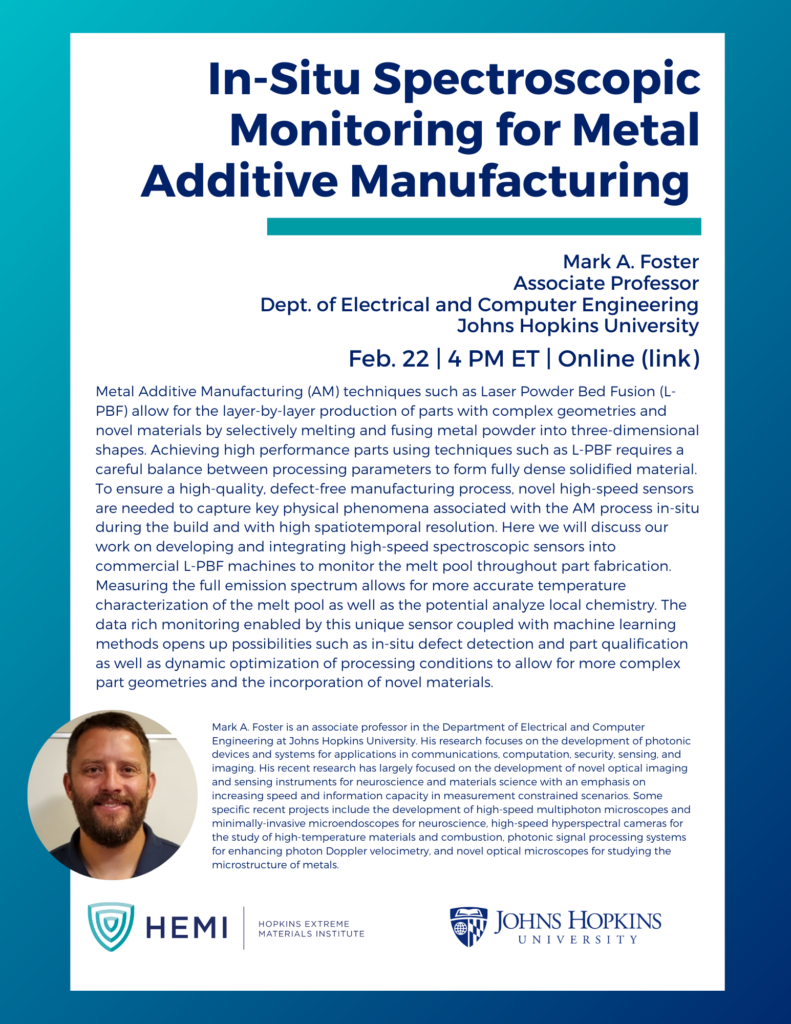February 22, 2022 @ 4:00 pm - 5:00 pm
Event Navigation
In-Situ Spectroscopic Monitoring for Metal Additive Manufacturing
Metal Additive Manufacturing (AM) techniques such as Laser Powder Bed Fusion (L-PBF) allow for the layer-by-layer production of parts with complex geometries and novel materials by selectively melting and fusing metal powder into three-dimensional shapes. Achieving high performance parts using techniques such as L-PBF requires a careful balance between processing parameters to form fully dense solidified material. To ensure a high-quality, defect-free manufacturing process, novel high-speed sensors are needed to capture key physical phenomena associated with the AM process in-situ during the build and with high spatiotemporal resolution. Here we will discuss our work on developing and integrating high-speed spectroscopic sensors into commercial L-PBF machines to monitor the melt pool throughout part fabrication. Measuring the full emission spectrum allows for more accurate temperature characterization of the melt pool as well as the potential analyze local chemistry. The data rich monitoring enabled by this unique sensor coupled with machine learning methods opens up possibilities such as in-situ defect detection and part qualification as well as dynamic optimization of processing conditions to allow for more complex part geometries and the incorporation of novel materials.
Mark A. Foster is an associate professor in the Department of Electrical and Computer Engineering at Johns Hopkins University. His research focuses on the development of photonic devices and systems for applications in communications, computation, security, sensing, and imaging. His recent research has largely focused on the development of novel optical imaging and sensing instruments for neuroscience and materials science with an emphasis on increasing speed and information capacity in measurement constrained scenarios. Some specific recent projects include the development of high-speed multiphoton microscopes and minimally-invasive microendoscopes for neuroscience, high-speed hyperspectral cameras for the study of high-temperature materials and combustion, photonic signal processing systems for enhancing photon Doppler velocimetry, and novel optical microscopes for studying the microstructure of metals.





